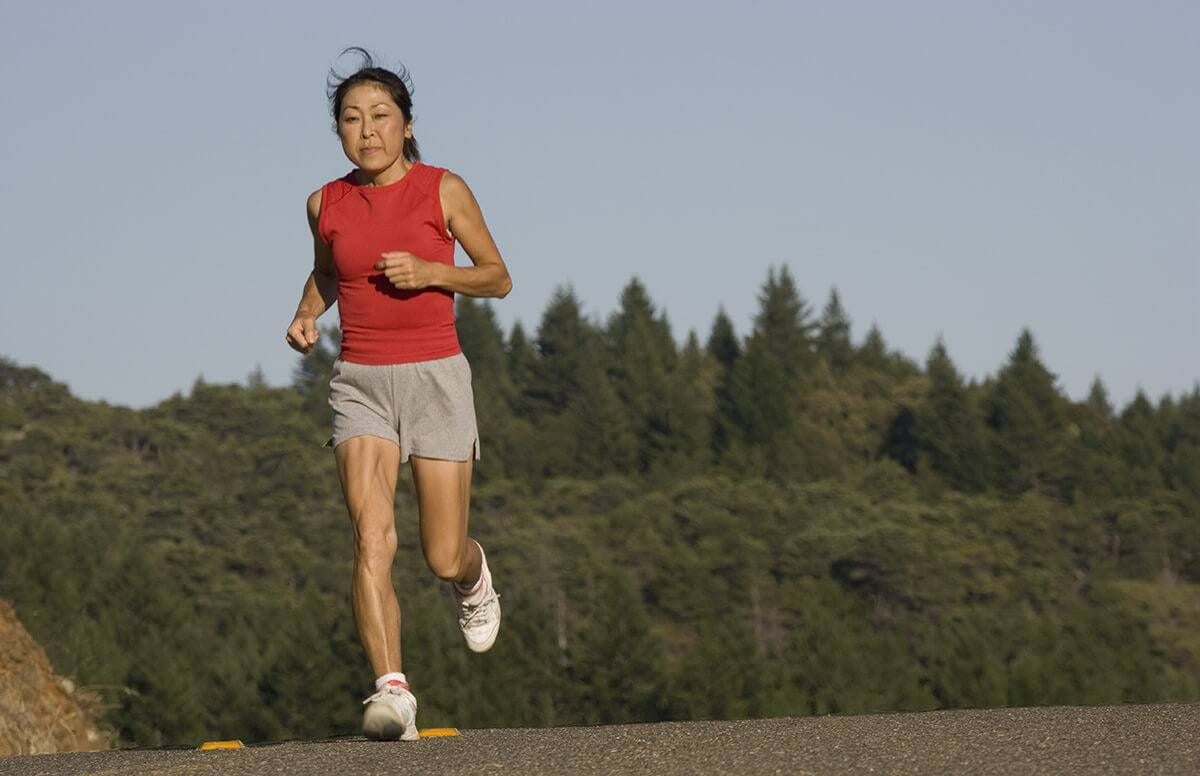6 Reasons to Learn to Love Jogging After 50
If you are not convinced it's no better than walking, read on
Staying active as you get older is critical to staying happy and healthy. Walking is one of the most popular ways for older adults to remain active, being a safe, low-impact activity. However, swapping your walk for a jog can have major benefits, including a healthier weight.

“The difference [between running and walking] was particularly notable among participants over 55,” explains Gretchen Reynolds, referring in a 2013 New York Times article to a recent study. “Runners in this age group were not running a lot and generally were barely expending more calories per week during exercise than older walkers. But their body mass indexes and waist circumferences remained significantly lower than those of age-matched walkers,”
That’s not all. Jogging has a wide variety of benefits, improving your overall health and quality of life. If you’re not ready to lace up your running shoes just yet, keep reading.
1. It Has a Long List of Health Benefits
Weight lifting is important as you age, allowing you to build muscle, which in turn, helps strengthen your bones. Staying limber with stretching is also critical for maintaining range of motion in every area of your life.
Physical activities like jogging, however, provides a wide variety of health benefits, including, but not limited to: reduced risk of cancer, increased insulin sensitivity, higher levels of HDL cholesterol (the good kind), improved bone density, reduce inflammation, and reduced risk of cardiovascular and all-cause death. Mental benefits include improved mood and reduced risk of depression and anxiety as well.
The best part is you don’t have to be a marathon runner to reap the health benefits. Just five to 10 minutes per day of running, even at slow speeds, "is associated with markedly reduced risks of death from all causes and cardiovascular disease," according to a 2014 study in the Journal of the American College of Cardiology.
2. Running Burns a Lot of Calories
Jogging is a full-body exercise, requiring core stabilization, lower body strength, hip flexibility, and upper body (the arms) for balance. As such, it also scorches more calories than many other low-intensity exercise options. Jogging at just 5 mph (a 12-minute mile) for 30 minutes, you burn:
- 125lb person: 240
- 155lb person: 298
- 185lb person: 355
When compared to hiking (calories burned: 180 to 266), golf (105 to 155), swimming (180 to 266) and others, it’s easy to see the value of jogging.
3. Jogging Is Social
There are few things better than catching up with friends. Instead of sitting in your kitchen with a cup of tea, however, head out for a jog instead. Running at a low intensity allows you to carry on a conversation while staying active.
Jogging is a great way to meet new people as well. Check with a few of your local running stores to see if they facilitate group runs with customers and people within the community. You can also head online to Meetup.com, where you’re sure to find one or two running groups close by.
4. It Boosts Your Longevity
The comprehensive, 30-year City Heart Study found that a regular jogging routine increases the life expectancy of men by 6.2 years and women by 5.6 years. This study started in 1976 with 20,000 men and women ages 20 to 93, allowing the authors to develop an extensive data set.
Better yet, they found that you don’t need to be sprinting or even running at a fast pace to reap the benefits. The goal is to simply keep your heart rate up. “You should aim to feel a little breathless, but not very breathless,” says Peter Schnohr, chief cardiologist of the Copenhagen City Heart Study.
5. You Can Start Slowly
If the idea of getting off the couch and running 3 miles right now is daunting, don’t worry. You don’t have to be an expert jogger right away. In fact, a slow and steady start is better for your body, giving it time to adapt to the new style of movement.
Barbara Hannah Grufferman, ambassador for bone health for the National Osteoporosis Foundation, started running after the age of 50 using Jeff Galloway’s Run-Walk-Run plan. (As the name suggests, it’s a combination of running and walking.) She shared her experience with AARP:
“Like many people over 50, I was worried because I thought running, or even strenuous walking, can hurt our joints,” she writes. “Research shows, however, that it won’t if done right. After 30 years of following his own program, Jeff has never had an injury. The reason is simple: it calls for slow, gentle running, with scheduled walk breaks.”
Use this program, or one similar, to start slow and build strength.
6. You Don’t Need Equipment
You don’t need a gym membership, expensive equipment or extra space at home to become a regular jogger. This makes jogging accessible to almost anyone, regardless of budget or access. What you do need, however, is a good pair of running shoes. The best way to find the right pair for you is to get a gait analysis.
You can do this at nearly any running store, where they’ll ask about your running habits, examine the wear pattern of old shoes, and assess your footfall. All of these factors will help them determine the type of shoe that enhances your movement and supports your body’s unique mechanics, reducing the likelihood of injury.
Jogging is a smart way to stay active as you age, especially because you don’t have to run fast or jog five times a week to reap the benefits. With just 50 minutes of jogging each week, you can lose weight, boost heart health, catch-up with friends and more. Make jogging a regular part of your active lifestyle and you’ll be feeling stronger and healthier in no time.

